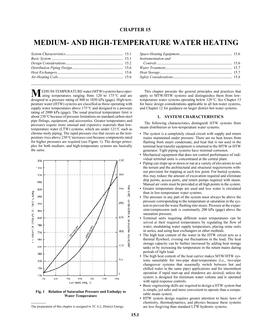Click here to purchase
To reduce health-care costs, energy management programs have been initiated in many hospitals. Several methods to evaluate the effectiveness of these programs are reviewed in this paper including: the energy utilization index (EUI), degree-day methods, and the management of energy use method (MEU). Though all of these methods are currently used, they do not provide reliable comparisons between hospitals of various sizes, locations, and functions. The hospital energy management index (HEMI), presented in this paper, combines the factors of size, outdoor temperature (location dependent), patient load (function) and energy consumption in a simple linear relationship. Statistically significant correlations have been found between the parameters of HEMI and a building function characteristic in hospitals. This relationship provides management potential as it allows comparisons to be made within a hospital (annual analysis) or between hospitals. Three hospitals of different sizes, located in Iowa, New York, and Florida, with similar occupancy loads are shown to have nearly identical energy consumption characteristics as evaluated by the HEMI. Using the pooled data from these hospitals as a reference, two other hospitals, characterized by the HEMI, had performances which were significantly different. One, located in California, had a substantially reduced occupancy load and was characterized by the HEMI as energy excessive. The other, located in Iowa, was supplied by a district heating system and was characterized by the HEMI to be energy efficient. Thus, the HEMI is proposed as a management instrument by which the energy performance.of a hospital can be quantified.
Citation: ASHRAE Transactions, Volume 84, Part 2, Albuquerque, NM
Product Details
- Published:
- 1978
- Number of Pages:
- 9
- File Size:
- 1 file , 570 KB
- Product Code(s):
- D-AL-2494


